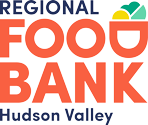Every four years, the Regional Food Bank participates in a national hunger study in conjunction with Feeding America. The most recent study, titled Hunger in America 2010, documents the extent of hunger in our region, in the state, and in the nation and helps guide policy discussions and affect change.
Key Findings
Hunger in America 2010 revealed that hunger remains a serious problem in upstate New York.
The Regional Food Bank serves an alarming number of hungry individuals.
The Regional Food Bank provides emergency food assistance to approximately 244,400 different people in our community each year – including 85,000 children and 13,000 seniors.
In a given week, approximately 38,600 people receive emergency food assistance from the 1,000+ member agencies in the Regional Food Bank’s 23-county service area.
The Regional Food Bank remains a critical partner in the fight against hunger.
- Food pantries, soup kitchens, and emergency shelters recieve more than half of their food (65%) from the Regional Food Bank
- Almost all emergency feeding programs (94%) said elimination of support from the Regional Food Bank would have a devastating or significant impact on their operations
- Hunger in the Regional Food Bank’s 23-county service area based on the Hunger in America 2010 study. For more information, visit http://www.hungerinamerica.org
Client Characteristics
Clients seeking emergency food assistance from the Regional Food Bank and its agencies are typically part of hard working families living below the federal poverty line. Of the households served by the Regional Food Bank:
- 39% have at least one adult working. The median monthly income is $700
- 69% live below the federal poverty line
- 42% are white, 28% are black, 23% are Hispanic, and 7% are from other racial or ethnic groups
Among all households served by the Regional Food Bank’s emergency feeding programs:
- 76% are food insecure, meaning they do not know where they will find their next meal
- 44% experience hunger, meaning they are completely without a source of food
- 39% receive food stamps
Clients are often forced to make choices between paying for food and everyday necessities.
- 45% have to choose between food and utilities
- 46% have to choose between food and housing
- 32% have to choose between food and health care
Agency Characteristics
Many of the Regional Food Bank’s member agencies depend on volunteers and faith-based organizations:
- More than 60% of food pantries and 28% of soup kitchens rely entirely on volunteers and have no paid staff
- Around half of the emergency feeding programs served by the Regional Food Bank (46%) are affiliated with churches, mosques, synagogues and other religious organizations
- Regarding the volume of clients, three-fourths of emergency feeding programs (74%) indicate they serve more clients now than they did in 2005 (the date of the last study)
Agency Reliance on the Regional Food Bank
- Food pantries, soup kitchens, and emergency shelters receive more than half of their food (65%) from the Regional Food Bank
- Almost all emergency feeding programs (94%) said elimination of support from the Regional Food Bank would have a devastating or significant impact on their operations
How This Study Was Conducted
Hunger in America 2010 is the largest, most comprehensive study of its kind ever conducted. The study provides authoritative, comprehensive, and statistically valid data on the national charitable response to hunger and the people served by private hunger-relief agencies. Through 62,000 face-to-face client interviews and 37,000 surveys of local charitable agencies, Hunger in America 2010 chronicles the nature and incidence of demand for emergency food assistance which, in turn, helps charitable feeding organizations better address the burgeoning need through program development and refinement. The results also better inform the public policy discourse so that federal nutrition programs can better serve those in need.

